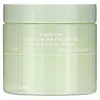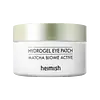What's inside
What's inside
 Key Ingredients
Key Ingredients

 Benefits
Benefits

 Concerns
Concerns

 Ingredients Side-by-side
Ingredients Side-by-side

Water
Skin ConditioningDipropylene Glycol
HumectantGlycerin
HumectantButylene Glycol
Humectant1,2-Hexanediol
Skin ConditioningHouttuynia Cordata Extract
Skin ConditioningBetaine
HumectantChamaecyparis Obtusa Water
MaskingBetaine Salicylate
AntimicrobialMadecassoside
AntioxidantAsiaticoside
AntioxidantMadecassic Acid
Skin ConditioningAsiatic Acid
Skin ConditioningPolyglyceryl-10 Laurate
Skin ConditioningArginine
MaskingPolyglyceryl-10 Myristate
Skin ConditioningMelaleuca Alternifolia Leaf Oil
AntioxidantDisodium EDTA
Sodium Hyaluronate
HumectantEthylhexylglycerin
Skin ConditioningChlorphenesin
AntimicrobialLimonene
PerfumingWater, Dipropylene Glycol, Glycerin, Butylene Glycol, 1,2-Hexanediol, Houttuynia Cordata Extract, Betaine, Chamaecyparis Obtusa Water, Betaine Salicylate, Madecassoside, Asiaticoside, Madecassic Acid, Asiatic Acid, Polyglyceryl-10 Laurate, Arginine, Polyglyceryl-10 Myristate, Melaleuca Alternifolia Leaf Oil, Disodium EDTA, Sodium Hyaluronate, Ethylhexylglycerin, Chlorphenesin, Limonene
Water
Skin ConditioningGlycerin
HumectantCarrageenan
Niacinamide
SmoothingCamellia Sinensis Leaf Extract
AntimicrobialCeratonia Siliqua Gum
EmollientPentylene Glycol
Skin ConditioningCaprylyl Glycol
EmollientLavandula Angustifolia Flower Extract
CleansingMonarda Didyma Leaf Extract
Skin ConditioningCyamopsis Tetragonoloba Gum
Emulsion StabilisingMentha Piperita Leaf Extract
Skin ConditioningFreesia Refracta Extract
Skin ConditioningChamomilla Recutita Flower Extract
MaskingRosmarinus Officinalis Leaf Extract
AntimicrobialLactobacillus Ferment
Skin ConditioningSaccharomyces Ferment
Skin ConditioningPaeonia Lactiflora Root Extract
Skin ConditioningGlycyrrhiza Glabra Root Extract
BleachingPolygonum Multiflorum Root Extract
Skin ConditioningPhellinus Linteus Extract
Skin ConditioningMorus Alba Bark Extract
Skin ConditioningSophora Angustifolia Root Extract
Skin ConditioningCimicifuga Racemosa Root Extract
AntimicrobialSesamum Indicum Seed Extract
Skin ConditioningAngelica Gigas Root Extract
Skin ConditioningScutellaria Baicalensis Root Extract
AstringentCitrus Nobilis Peel Extract
MaskingCupressus Sempervirens Leaf/Stem Extract
Skin ConditioningHedera Helix Leaf/Stem Extract
AntimicrobialCitrus Aurantium Bergamia Fruit Oil
MaskingLitsea Cubeba Fruit Oil
MaskingRibes Nigrum Leaf Extract
PerfumingButylene Glycol
HumectantEthyl Hexanediol
SolventHexylene Glycol
EmulsifyingRicinus Communis Seed Oil
MaskingPropanediol
SolventPinus Sylvestris Leaf Extract
TonicPolyglyceryl-10 Laurate
Skin ConditioningCalcium Chloride
AstringentAllantoin
Skin ConditioningCellulose Gum
Emulsion Stabilising1,2-Hexanediol
Skin ConditioningChromium Oxide Greens
Potassium Chloride
Hydroxyacetophenone
AntioxidantIllicium Verum Fruit Extract
PerfumingSucrose
HumectantChlorphenesin
AntimicrobialCalcium Lactate
AstringentDipotassium Glycyrrhizate
HumectantTitanium/Titanium Dioxide
Cosmetic ColorantSynthetic Fluorphlogopite
Adenosine
Skin ConditioningTitanium Dioxide
Cosmetic ColorantPolymethylsilsesquioxane
Silica
AbrasivePolyglyceryl-10 Oleate
Skin ConditioningArginine
MaskingEthylhexylglycerin
Skin ConditioningDisodium EDTA
Water, Glycerin, Carrageenan, Niacinamide, Camellia Sinensis Leaf Extract, Ceratonia Siliqua Gum, Pentylene Glycol, Caprylyl Glycol, Lavandula Angustifolia Flower Extract, Monarda Didyma Leaf Extract, Cyamopsis Tetragonoloba Gum, Mentha Piperita Leaf Extract, Freesia Refracta Extract, Chamomilla Recutita Flower Extract, Rosmarinus Officinalis Leaf Extract, Lactobacillus Ferment, Saccharomyces Ferment, Paeonia Lactiflora Root Extract, Glycyrrhiza Glabra Root Extract, Polygonum Multiflorum Root Extract, Phellinus Linteus Extract, Morus Alba Bark Extract, Sophora Angustifolia Root Extract, Cimicifuga Racemosa Root Extract, Sesamum Indicum Seed Extract, Angelica Gigas Root Extract, Scutellaria Baicalensis Root Extract, Citrus Nobilis Peel Extract, Cupressus Sempervirens Leaf/Stem Extract, Hedera Helix Leaf/Stem Extract, Citrus Aurantium Bergamia Fruit Oil, Litsea Cubeba Fruit Oil, Ribes Nigrum Leaf Extract, Butylene Glycol, Ethyl Hexanediol, Hexylene Glycol, Ricinus Communis Seed Oil, Propanediol, Pinus Sylvestris Leaf Extract, Polyglyceryl-10 Laurate, Calcium Chloride, Allantoin, Cellulose Gum, 1,2-Hexanediol, Chromium Oxide Greens, Potassium Chloride, Hydroxyacetophenone, Illicium Verum Fruit Extract, Sucrose, Chlorphenesin, Calcium Lactate, Dipotassium Glycyrrhizate, Titanium/Titanium Dioxide, Synthetic Fluorphlogopite, Adenosine, Titanium Dioxide, Polymethylsilsesquioxane, Silica, Polyglyceryl-10 Oleate, Arginine, Ethylhexylglycerin, Disodium EDTA
 Reviews
Reviews

Ingredients Explained
These ingredients are found in both products.
Ingredients higher up in an ingredient list are typically present in a larger amount.
1,2-Hexanediol is a synthetic liquid and another multi-functional powerhouse.
It is a:
- Humectant, drawing moisture into the skin
- Emollient, helping to soften skin
- Solvent, dispersing and stabilizing formulas
- Preservative booster, enhancing the antimicrobial activity of other preservatives
Arginine is an amino acid that is important for human development. Your body uses is it to produce hair keratin and skin collagen.
As a cosmetic ingredient, Arginine has antioxidant properties and can also help repair damaged skin. This ingredient is derived either synthetically or from animals.
Arginine isn't fungal acne safe when used in the presence of other lipids (fats, fatty acids, oils, esters, etc). Oils and fats occur naturally within the skin, so take caution when using Arginine if you're prone to fungal acne.
Learn more about ArginineButylene Glycol (or BG) is used within cosmetic products for a few different reasons:
Overall, Butylene Glycol is a safe and well-rounded ingredient that works well with other ingredients.
Though this ingredient works well with most skin types, some people with sensitive skin may experience a reaction such as allergic rashes, closed comedones, or itchiness.
Learn more about Butylene GlycolChlorphenesin is a synthetic preservative. It helps protect a product against bacteria in order to extend shelf life. In most cases, Chlorphenesin is paired with other preservatives such as phenoxyethanol and caprylyl glycol.
Chlorphenesin is a biocide. This means it is able to help fight the microorganisms on our skin. It is also able to fight odor-releasing bacteria.
Chlorphenesin is soluble in both water and glycerin.
Studies show Chlorphenesin is easily absorbed by our skin. You should speak with a skincare professional if you have concerns about using Chlorphenesin.
Learn more about ChlorphenesinDisodium EDTA plays a role in making products more stable by aiding other preservatives.
It is a chelating agent, meaning it neutralizes metal ions that may be found in a product.
Disodium EDTA is a salt of edetic acid and is found to be safe in cosmetic ingredients.
Learn more about Disodium EDTAEthylhexylglycerin (we can't pronounce this either) is commonly used as a preservative and skin softener. It is derived from glyceryl.
You might see Ethylhexylglycerin often paired with other preservatives such as phenoxyethanol. Ethylhexylglycerin has been found to increase the effectiveness of these other preservatives.
Glycerin is already naturally found in your skin. It helps moisturize and protect your skin.
A study from 2016 found glycerin to be more effective as a humectant than AHAs and hyaluronic acid.
As a humectant, it helps the skin stay hydrated by pulling moisture to your skin. The low molecular weight of glycerin allows it to pull moisture into the deeper layers of your skin.
Hydrated skin improves your skin barrier; Your skin barrier helps protect against irritants and bacteria.
Glycerin has also been found to have antimicrobial and antiviral properties. Due to these properties, glycerin is often used in wound and burn treatments.
In cosmetics, glycerin is usually derived from plants such as soybean or palm. However, it can also be sourced from animals, such as tallow or animal fat.
This ingredient is organic, colorless, odorless, and non-toxic.
Glycerin is the name for this ingredient in American English. British English uses Glycerol/Glycerine.
Learn more about GlycerinPolyglyceryl-10 Laurate is an ester of lauric acid and Polyglycerin-10.
Polyglyceryl-10 Laurate is a cleansing agent and emulsifier. It helps gather dirt, oil, and other pollutants to be rinsed away. As an emulsifier, it helps prevent ingredients from separating, such as oil and water.
Polyglyceryl-10 Laurate may not be fungal acne safe.
Learn more about Polyglyceryl-10 LaurateWater. It's the most common cosmetic ingredient of all. You'll usually see it at the top of ingredient lists, meaning that it makes up the largest part of the product.
So why is it so popular? Water most often acts as a solvent - this means that it helps dissolve other ingredients into the formulation.
You'll also recognize water as that liquid we all need to stay alive. If you see this, drink a glass of water. Stay hydrated!
Learn more about Water